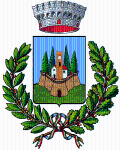Descrizione
All'Acqua Borra, in località Santa Maria a Dofana, presso Monteaperti, sgorga una piccola sorgente di acqua termale, che la tradizione indica come miracolosa.
Accanto vi è una casa colonica, appoggiata ad una curiosa parete di travertino. Attorno si apre il suggestivo paesaggio delle Crete Senesi, e nel sottosuolo si nasconde un grande serbatoio di acqua caldissima.
L'Acqua Borra era frequentata fin dai tempi delle antiche civiltà: infatti sono stati trovati oggetti fittili, che venivano gettati nelle acque salubri in onore delle ninfee custodi del luogo.
Per millenni le persone del luogo si sono immerse nelle sue acque per curare pelle, articolazioni, ossa e muscoli, e veniva perfino bevuta.
Nel Trattato dell'Acqua Borra, scritto nel 1647 dal medico e filosofo senese Leandro Terucci, si confondono preziose osservazioni e credenze popolari: "pare quest'Acqua sia stata data dal Cielo come preziosa medicina, per sanare quasi tutti i mali del corpo". L'autore del Trattato dell'Acqua Borra cerca anche di dare una spiegazione del curioso toponimo: si chiama così perchè tumefà lo stomaco, e il ventre, o perchè “gagliardamente espurga".
Un secolo fa lo scenario era ancora più suggestivo: l'acqua defluiva dalla sommità di una piccola collina di travertino, formata nel corso dei millenni. Infatti l'acqua termale, una volta arrivata in superficie, si raffredda e deposita il calcare che porta in soluzione, e col tempo si accumula in strati sovrapposti. La collinetta di travertino è stata tagliata a fette tra la fine dell'800 e l'inizio del '900 per ricavare materiale da costruzione, caratterizzato da particolari sfumature arancioni. É rimasta solo una parete: da una parte è l'ultimo fronte della cava di travertino e dall'altra è il muro della casa colonica.
English version:
Acqua Borra, in the locality of Santa Maria a Dofana near Monteaperti, is the site of a small hot spring which tradition holds is miraculous.
Next to it is a farmhouse against an odd travertine wall, surrounded by the evocative landscape of the Crete Senesi chalk hills, with an abundant underground reservoir of very hot water.
Acqua Borra had been frequented since the days of ancient civilizations; in fact, clay objects have been found which were thrown into the health-giving water to honor the nymphs who were the caretakers of the place.
For millennia, locals bathed in the waters to cure their skin, joints, bones and muscles, and even drank them.
The 1647 Acqua Borra treatise written by the Sienese physician and philosopher Leandro Terucci is a mix of valuable observations and folk beliefs: “it seems that this Water was given us from Heaven as precious medicine to heal nearly every illness of the body.” The author of the Treatise also tries to explain the odd toponym, suggesting that it is thus named because the water makes the belly swell, or because it “vigorously purges.”
A century ago, the setting was even more evocative: water flowed down from the top of a small travertine hill formed over the course of millennia. In fact, one it comes to the surface, the thermal water cools and deposits limestone, which accumulates in layers over time. The travertine hill was cut into slices in the late 19th-early 20th century for use as construction material, as it had interesting orange-ish nuances. Only one wall remains; on one side it is the last side of the travertine quarry, and on the other, the wall of the farmhouse.
Modalità d'accesso
sempre aperto
Indirizzo
Punti di contatto
Ultimo aggiornamento: 4 marzo 2024, 12:50

